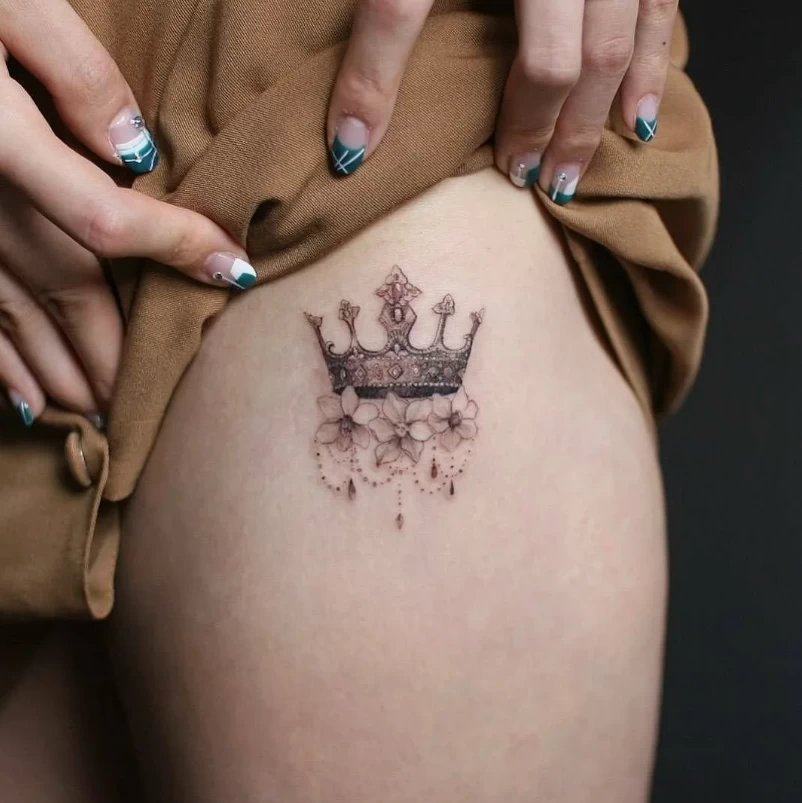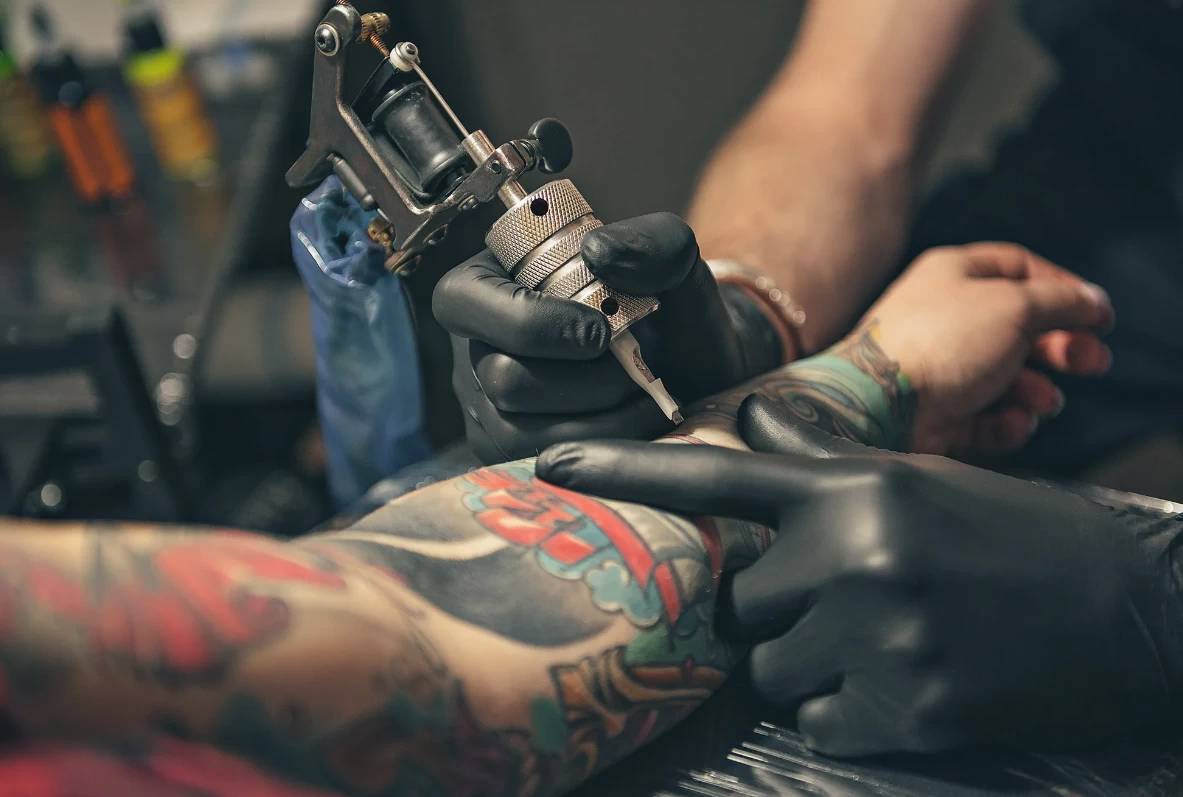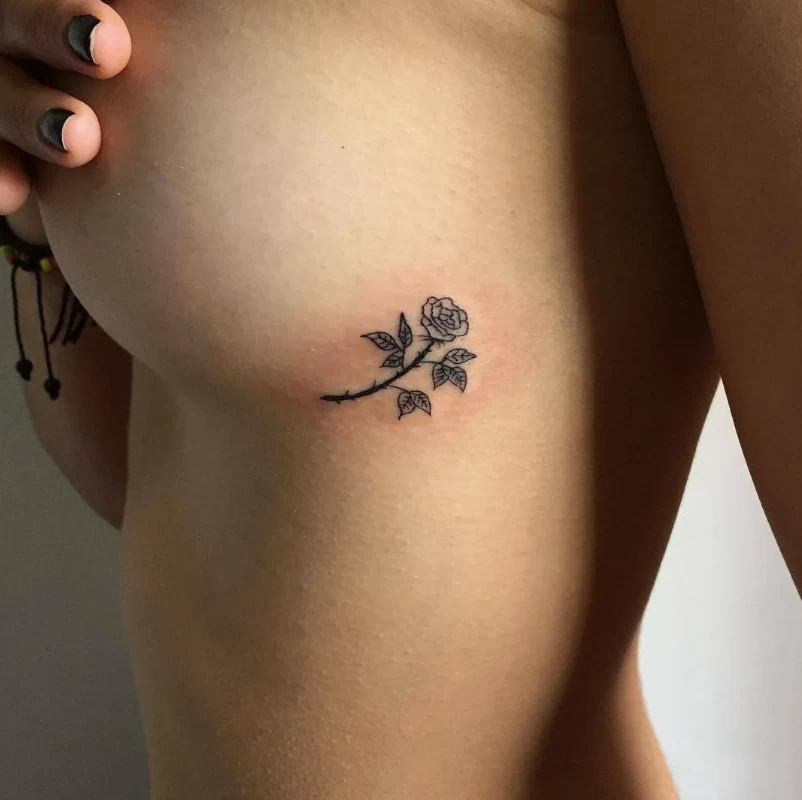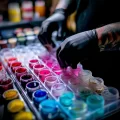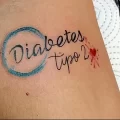Disclaimer: This article is intended solely for informational purposes and should not be considered as advice for action. All tips and recommendations provided herein do not replace professional medical advice. If you experience any problems or discomfort associated with your tattoo, it is strongly recommended to consult a qualified doctor for appropriate assistance and treatment.
Introduction
Tattoos have long transcended their role as mere symbols of rebellion or the exclusive privilege of sailors and bikers. Today, they are a popular form of self-expression widely embraced by various demographics globally. From delicate minimalist designs to expansive artistic canvases, tattoos allow individuals to express their uniqueness and narrate their stories through body art. However, like any art form, creating a tattoo requires not only the talent of the tattoo artist but also subsequent care for the skin. Peeling of the tattoo is a natural and common part of the healing process, which might cause concern for newcomers in the tattoo world. Skin peeling, similar to what happens after sunburn, is a normal occurrence indicating that the body is healing and adjusting to the new “decoration.” It is crucial to understand that proper care can significantly enhance and accelerate the healing process and help maintain the brightness and clarity of your tattoo for many years.
MAIN CAUSES OF TATTOO PEELING
Phases of Tattoo Healing and Peeling Mechanism
Tattoo healing is a complex process that can be divided into several phases. Immediately after getting a tattoo, the inflammation phase begins, during which the skin may become red and swollen. This is followed by the healing phase, which includes the formation of a scab and its subsequent peeling. Peeling is a natural response of the body, where the upper layers of the epidermis, damaged during tattooing, die off. This process is similar to the healing of any other wound or abrasion, where the skin also peels off, giving way to new, healthy cells.
External Factors Contributing to Peeling
Improper care of the tattoo can significantly exacerbate the peeling process. This includes the use of unsuitable ointments or creams, excessive wetting of the tattoo, especially in the first few days after application, and excessive exposure to the tattooed area, for example, wearing tight clothing. Climatic conditions also play a role: severe frost or heat can enhance peeling, as extreme temperatures dry out the skin, making it more vulnerable and prone to peeling.
Internal Factors
An individual’s reaction to tattoo ink can also be a cause of peeling. An allergic reaction to the components of the ink, especially certain colors, can cause additional irritation and peeling of the skin. Sensitivity to ink manifests as redness, itching, and even inflammation, leading to increased peeling. In such cases, it is important to consult a doctor and a tattoo artist to choose alternative options or adjust the care for the tattoo.
Understanding these factors will help optimize the healing process and reduce discomfort associated with peeling, ensuring a better and more lasting result for your tattoo.
HOW TO CARE FOR A TATTOO DURING THE HEALING PERIOD
Detailed Instructions for Caring for a Fresh Tattoo
The healing period for a tattoo is a critical time that requires careful and attentive care. Immediately after getting a tattoo, the skin will be sensitive, and its protective functions will be weakened. The following steps will help ensure proper healing:
- Cleanliness — Be sure to wash the tattooed area twice a day with a mild antibacterial soap. Use warm water and gently pat the skin dry with a clean towel after washing.
- Moisturizing — After cleaning and complete drying of the skin, apply a thin layer of specialized cream or ointment for tattoos. This will help keep the skin hydrated and promote rapid healing.
- Protection — Avoid getting dirt and direct contact with clothing, especially tight and synthetic materials, which can irritate the skin and contribute to infection.
Recommendations for Using Ointments and Creams
Choosing the right product for tattoo care is crucial for the healing process. Not all ointments are suitable for fresh tattoos, and it is important to choose those specifically designed for tattoo healing:
- Antibiotic ointments may be recommended to prevent infection, but they should be used cautiously and on the advice of a master.
- Natural moisturizing creams without fragrances and allergens (for example, creams based on shea butter or coconut oil) can be a good choice for maintaining skin moisture without the risk of irritation.
The Importance of Maintaining Hygiene and Avoiding Direct Sunlight
Maintaining cleanliness of the tattooed area and protecting it from external factors play an important role in the healing process. Here are some additional tips:
- Avoid direct sunlight on the tattooed area, as UV radiation can cause the colors to fade and damage the healing skin. Use a high SPF sunscreen after complete healing.
- Avoid swimming and staying in the water for long periods during the first few weeks, as this can contribute to infection and wash out the colors.
Following these simple but effective recommendations will help accelerate the healing process of the tattoo, reduce the risk of complications, and preserve the brightness and clarity of your tattoo art.
WHAT TO DO IF THE TATTOO PEELS
Step-by-Step Actions When Detecting Peeling
Peeling of the tattoo is a normal part of the healing process, and there is usually no reason for concern. However, it is important to know how to respond properly to avoid damaging the tattoo and skin. Here are the main steps to take:
- Assess the condition of the tattoo — Minor peeling accompanied by mild itching usually does not require special attention and is part of the normal healing process.
- Continue to care for the tattoo — Regularly wash the tattoo with mild soap and water, then gently pat it dry with a clean towel.
- Use a moisturizing cream — Apply a thin layer of specialized cream for tattoo care to help moisturize the skin and relieve discomfort.
When You Can Easily Moisturize and When to See a Doctor
Peeling usually does not require special moisturization beyond what is already recommended as part of regular care. However, if you notice that the skin is excessively dry, you can apply a moisturizing cream more often. Consultation with a doctor is necessary in the following cases:
- Prolonged bleeding or pus discharge.
- Severe pain, redness, or swelling that does not subside for several days.
- Signs of infection, such as fever or an unpleasant odor from the wound.
What Definitely Should Not Be Done with a Peeling Tattoo
During the peeling period, it is extremely important to avoid the following actions to prevent additional irritation or infection:
- Do not tear off the crusts — Never tear off peeling skin or crusts, as this can damage the design and cause scarring.
- Do not use rough scrubs or harsh washcloths when washing the tattooed area.
- Avoid long exposure to the sun — UV rays can damage healing skin and exacerbate peeling.
- Do not swim — Avoid open bodies of water and pools until the tattoo is fully healed to prevent infection.
Following these simple but important rules will help ensure healthy healing of your tattoo and preserve its beauty for many years.
How to Prevent Excessive Peeling
Tips for Preventing Excessive Peeling Excessive peeling can slow down the healing process of a tattoo and affect the quality of the image. To minimize this, it is important to follow several key recommendations:
- Moderate Moisturizing — Regularly apply a moisturizing cream for tattoos to prevent skin dryness. Avoid over-moisturizing, as this can lead to ink washout.
- Gentle Cleansing — Wash the tattooed area with a mild antibacterial soap, avoiding harsh scrubbing that can provoke additional peeling.
- Sun Protection — Wear clothing that covers the tattoo from direct sunlight, or use sunscreen after the skin has healed to avoid damage.
The Importance of Choosing a Professional Artist and Quality Materials for Your Tattoo Choosing an experienced and professional tattoo artist is a key aspect of a successful tattoo. A professional will not only perform the work correctly but will also use quality inks and equipment, significantly reducing the risk of excessive peeling:
- Tested Inks — High-quality inks irritate the skin less and promote even healing.
- Proper Technique — An experienced artist will know how deep to insert the needle to avoid damaging deeper layers of skin, which also prevents excessive peeling.
Recommendations for Nutrition and Skin Hydration During Healing Nutrition plays a crucial role in the tattoo healing process. Consuming sufficient amounts of water and nutrient-rich foods can improve skin condition and speed up the healing process:
- Water — Drink at least 8-10 glasses of water a day to maintain optimal skin hydration.
- Healthy Fats and Vitamins — Increase your intake of foods rich in Omega-3 fatty acids and vitamin E (such as fish, nuts, avocados), which aid in skin recovery.
- Protein — Ensure that your diet contains a sufficient amount of protein, necessary for skin repair.
Adhering to these recommendations will not only help prevent excessive peeling but also ensure the long-term preservation of the quality and brightness of your tattoo.
TYPICAL MISTAKES AFTER GETTING A TATTOO
After getting a tattoo, it is important to know which actions can harm the healing process and lead to excessive peeling or other problems. Here are some of the most common mistakes to avoid: List of Common Mistakes That Can Exacerbate the Peeling Process
- Insufficient Cleanliness — Neglecting hygiene or using dirty hands when caring for a tattoo can lead to infections.
- Excessive Moisture — Prolonged immersion of the tattooed area in water, whether in a bath, pool, or even a shower, can wash away the protective scab and provoke ink washout.
- Direct Sun Exposure — Exposing a fresh tattoo to the sun can cause the colors to fade and damage the skin.
- Peeling Off Scabs and Flaking Skin — This can lead to scarring and distortion of the design.
- Using Unsuitable Moisturizing Products — Applying creams with allergens or fragrances can cause irritation or allergic reactions.
How to Avoid These Mistakes and Ensure Optimal Healing To avoid the aforementioned mistakes and promote healthy tattoo healing, follow these recommendations:
- Maintain Cleanliness — Regularly wash the tattoo with mild antibacterial soap and water, avoiding the use of rough sponges or scrubs. Always wash your hands before touching the tattoo.
- Limit Water Contact — Avoid long water procedures and cover the tattoo with a waterproof bandage if necessary (e.g., during a short shower).
- Protect the Tattoo from the Sun — Use a high SPF sunscreen after the tattoo has healed and wear clothing that covers the tattoo initially.
- Do Not Peel Off Scabs — Allow the natural healing process to proceed without interference. Apply a moisturizing cream for tattoos if the skin feels dry or itchy.
- Choose Suitable Moisturizing Products — Use creams specifically designed for tattoo care that promote healing and do not contain harmful additives. Adhering to these simple rules will help avoid common mistakes and ensure the healthy healing of your tattoo, maintaining its beauty for many years.
Frequently Asked Questions About Tattoo Peeling and Care
Answers to the Most Frequently Asked Questions About Tattoo Peeling
Question: Is it normal for my tattoo to peel?
Answer: Yes, it is completely normal. Peeling is part of the healing process and indicates that your skin is recovering after getting tattooed.
Question: How long does the peeling last?
Answer: Peeling usually begins a few days after getting the tattoo and can last up to two weeks. The duration can vary depending on the size of the tattoo and individual skin characteristics.
Question: What should I do if the peeling seems excessive?
Answer: If the peeling appears excessive or is accompanied by severe irritation, it’s important to ensure you are caring for the tattoo correctly. Make sure you are gently washing and moisturizing it. If symptoms persist, it is recommended to consult a dermatologist.
Myths and Misconceptions About Tattoo Care
Myth: You need to frequently apply cream to a tattoo to prevent peeling.
Reality: Over-moisturizing can actually exacerbate peeling and even lead to ink blurring. It is important to apply a moisturizing cream in a thin layer.
Myth: Sunscreen is needed immediately after getting a tattoo.
Reality: Sunscreen should only be used once the tattoo has fully healed. Direct exposure to sunlight on a fresh tattoo should be minimized.
Myth: If a tattoo is peeling, it means it is infected.
Reality: Peeling by itself is not a sign of infection. Signs of infection include high fever, severe redness, swelling, pus, or an unpleasant odor.
These answers and explanations of myths will help you better understand the tattoo healing process and ensure proper care for your tattoo to maintain its beauty for many years.
Conclusion on Tattoo Peeling
The Importance of Professional Consultation
Approaching tattoo care is crucial for the health of your skin and the longevity of the image. During the healing process, it is important to closely monitor any changes and not ignore potential signs of problems. Professional consultation with a tattoo artist or dermatologist is necessary if unusual symptoms such as excessive redness, pain, swelling, or pus discharge occur. These specialists can offer appropriate recommendations and, if necessary, treatment to ensure safe and effective healing.
The Beauty and Significance of Tattoos as a Form of Self-Expression
Tattoos are not just body decorations; they are a powerful form of self-expression and art. Each tattoo tells a unique story, reflects personal beliefs, memories, or even significant life stages. It is important to value and respect this art form, approaching the tattooing process and subsequent care with due attention and care.
Remember, proper care starts from the moment you choose an artist and continues throughout the life of the tattoo. A healthy, well-cared-for tattoo not only looks better but also reflects your respect for your own body as a canvas for art.
So, be mindful of your tattoos, take care of them, and let them proudly tell your unique story to the world.


